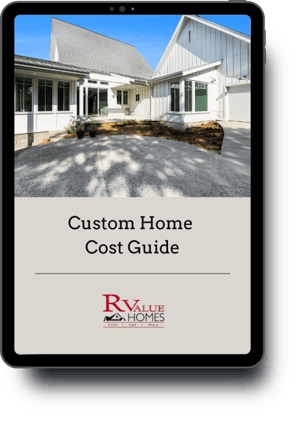4 Min Read
Mistakes to Avoid When Building an Energy Efficient Home | Grand Rapids
Many people want a home with an elevated level of energy efficiency. When you build an energy-efficient home, you make a long-term investment in your property’s sustainability and comfort. Your first time building an energy-efficient home will inevitably be a learning process, and you might even find things along the way that you wish you could’ve avoided. Discover some common building mistakes now, so that your next home will continue to exceed your needs and expectations.
-png-1.png)
What Are Some of the Considerations of an Energy Efficient Building?
Building energy-efficient homes in Grand Rapids requires careful design and construction throughout the entire process. Your home builder should keep an eye on these factors in mind:
- Tightly-sealed building envelope
- Insulation
- High-efficiency heating and cooling
- Effective ventilation
- Energy-efficient appliances
- Efficient windows and doors
When these components are detailed well, your home’s efficiency will excel.
What Should You Avoid in a New Home?
When building a custom home, avoid these mistakes to ensure that you’ll love your home and that it will save you energy for a lifetime.
1. Neglecting Air Sealing
The number one mistake to avoid when building an energy-efficient home is forgetting air sealing. An airtight home is no accident! Air sealing after the fact is never quite as good.
What good are gobs of insulation if your windows are left open? Similarly, a typical home loses precious heat and humidity through hundreds of tiny air leaks. Furthermore, to avoid pollutants, humidity problems, and a host of other issues related to your ventilation, you must stop all air leaks when building your new home. One (but not the only) of the key methods we use are Insulated Concrete Form (ICF) walls. ICF homes provide a tight buffer between your home’s air and the outside air.
2. Building More Than You Need
Since larger spaces use more energy, square footage and layout are major considerations for your home’s energy efficiency. In fact, we would go as far as to say two-thirds of your homes’ efficiency is in the design itself. If you’re aiming to lower your energy consumption or to reach net-zero, a larger home will most certainly require additional efforts. And a poorly designed home will introduce complexities in air sealing and insulating. Choosing a size that fits your needs and considering the requirements of air, water, and thermal barriers will ensure your needs are met without adding extra complications.
3. Removing Humidity
In an air-tight ICF custom home, you will need a strategy for removing humidity. Humidity is constantly added by showering, cooking, and simply breathing! Excess moisture is great for growing things like bacteria, mold, mildew, and even fungi! It leads to problems for both the building envelope and air quality. If the moisture in a home isn’t removed, in extreme cases it will condensate on walls and windows, causing a plethora of additional issues.
4. Details, Details, Details
Ensure that you have all your t’s crossed and your i’s dotted. Details most people never see and many builders never consider have a significant impact on a home’s energy efficiency, comfort, and quality. Triple pane windows and the spacers used, exactly where the insulation is placed under the slab and which side the vapor barrier goes, which variable vapor barriers to seal the ceiling line, and more. You will want a comprehensive plan for all the minutiae so the final result will be not only your dream home but a durable home that lasts for generations.
5. Forgetting About Ventilation
Building an air-tight home sounds wonderful, but only works in practice if ventilation remains a key component. Energy-efficient homes need balanced ventilation to ensure that moisture and CO2 levels and airflow are properly maintained. Proper ventilation allows each room to feel and smell fresh while staying pollutant-free without the energy and air quality penalty of running your bath fan or opening your window.
6. Hiring a Contractor Without Experience
Some contractors exaggerate their skills in building green homes, leading to a phenomenon known as “greenwashing”. While it is true that a builder might select energy-efficient appliances and thicker insulation, a successful project considers the big picture. You need an experienced builder who can do much more than that. Sustainable, energy-efficient homes require a thoughtful, whole-house approach. There are several important questions to ask a custom home builder before you hire; and asking about his/her experience with these sustainable, energy-efficient homes should be a priority. What are the HERS scores of the last several homes? Blower door test results?
What Can Go Wrong When Building a House?
Building a house is a complicated process, and a lot of things can go wrong from beginning to end. Some common concerns include:
- Failure to properly estimate construction costs
- Poor communication between the owners, architect, engineer, and builder
- Lack of detail in the planning process
Our pre-construction process prevents these problems by implementing a thorough planning and home creation process that provides a clear-cut outline for your project.
How Do You Tell If Your House Is Poorly Built?
Every home will eventually need repairs. In the beginning, a custom home ought to meet or exceed every requirement. Here are a few signs your home may be poorly built:
- High Blower Door Test results (a test for air leakage)
- Infrared scan that reveals energy leaks
- Uneven temperatures room to room
- Condensation on windows and walls
- Odors
Any of these problems could spell trouble on the horizon.
What Are Some Eco-Friendly Building Considerations for Your Custom Home?
While building an eco-friendly home starts with design, sustainable building materials play a significant role. It is important to keep in mind that the best materials for your home depend on a variety of factors such as size, use, and long-term plans. Some considerations for your home might include:
- Use renewable materials
- Where renewable doesn’t make sense, consider extreme durability (like concrete!)
- It’s all about energy efficiency!
- Use 100% Insulating Concrete Forms for exterior walls
- Underslab insulation isn’t optional
- Install a variable vapor barrier for sealing your ceiling
- Consider passive solar design principles
- Use sheeting with an integrated air barrier
- Choose windows with low u-values
Wondering what an energy-efficient home costs in West Michigan? We can explain the various factors involved.
You cannot build a home without breaking ground, but you can do it without breaking these rules. By avoiding these common building mistakes, you’ve gone a long way toward ensuring your home is highly efficient both now and in the future. At R Value Homes, we make your health, comfort, and efficiency a top priority. Contact us to learn more.





